Stockholm syndrome narcissist
Why Is It So Hard to Leave the Narcissist in Your Life?
Source: Jess Watters/Pexels
I am seeing more and more people in my office who tell me some version of the following story:
I used to be a really confident and mentally healthy person. I had a good job, lots of friends, and I was happy most of the time. Now I am a total wreck. I can't concentrate on my work and I feel as if I am going crazy. I know that I am in a really destructive relationship with a narcissist who abuses me, but somehow, I can't manage to leave once and for all.
This person used to be incredibly loving to me, but now they treat me like dirt. I don't understand what is happening or what I have done that makes them treat me this way. I love them so much! I have tried to leave, but each time I come back the moment that they start being nice to me again. I literally cannot make myself stay away. Can you help me?
Why is it so hard to leave the abusive narcissist in your life?
If the above story resonates with you, and you too have found yourself begging for crumbs of affection from an abusive person with narcissistic personality disorder, I may be able to help you understand how you got here—and why you are finding it so hard to just walk away and not look back. The answer is that you have become “Trauma Bonded” to this person through a blend of “Intermittent Reinforcement” and “Stockholm Syndrome.”
What is “narcissistic trauma bonding”?
Humans are wired to emotionally bond with the people around them. This ability to bond is the glue that keeps families and relationships together. When we feel endangered or insecure our natural reaction is to reach out to those we are bonded with for protection. But what happens when the person we are bonded to is the one who is mistreating us? Then our tendency to bond works against us.
Under normal circumstances, we might be able to walk away from our abuser and look for help elsewhere. Unfortunately, the conditions that create trauma bonding are not at all normal.
With “Narcissistic Trauma Bonding,” you are initially showered with intense love and approval. It is like a fantasy come true. Then gradually the ratio of positive to negative events shifts—often so subtly that you cannot say exactly when this happened. You find yourself in fights with someone you desperately love who claims that everything bad that is happening is all your fault.
You find yourself in fights with someone you desperately love who claims that everything bad that is happening is all your fault.
Unless you walk out immediately and never look back, you are well on your way to becoming this person’s psychic prisoner. You will find yourself “Trauma Bonded” to someone who is destroying you. This is like your own personal opiate addiction crisis. You are now addicted to this person’s approval and only desire their love and no one else’s. You know you should stop, but you do not have the willpower to do so on your own.
The 7 Stages of Narcissistic Trauma Bonding
Stage 1: “Love Bombing”—The narcissist showers you with love and validation.
Stage 2: Trust and Dependency—You start to trust that they will love you forever. You now depend on them for love and validation.
Stage 3: Criticism Begins—They gradually reduce the amount of love and validation that they give you and start to criticize you and blame you for things. They become demanding.
They become demanding.
Stage 4: “Gaslighting”—They tell you that this is all your fault. If you would only trust them and do exactly as they say, they would shower you with love again. They try to make you doubt your own perceptions and accept their interpretation of reality.
Stage 5: Control Is Established—You do not know what to believe but think that your only chance of getting back the good feelings of Stage 1 is to try doing things their way.
Stage 6: Resignation and Loss of Self—Things get worse, not better. When you try to fight back, they up their abuse. Now you would just settle for peace and for the fighting to stop. You are confused, unhappy, your self-esteem is at its lowest.
Stage 7: Addiction—Your friends and family are worried about you. You know that this situation is terrible, but you feel as if you cannot leave because this person is now everything to you. All you can think about is winning back their love.
All you can think about is winning back their love.
How is it possible that this can happen to a normally sane and functional person like you?
The answer to this question lies in understanding the underlying dynamics of how humans react to a combination of dependency and abuse coupled with “intermittent reinforcement.”
Intermittent Reinforcement
Many research studies have focused on how to get healthy laboratory rats to keep pressing a bar in the hope that they would continue to get food pellets. The researchers’ goal was to keep the rats working for rewards long after they had stopped giving them any. They chose lab rats because they react very similarly to humans in these types of situations.
The researchers experimented with different patterns of rewards and found the following:
Pattern 1—Reward them every time they press
This was the least effective reward schedule. The rats expected to be rewarded after every bar press.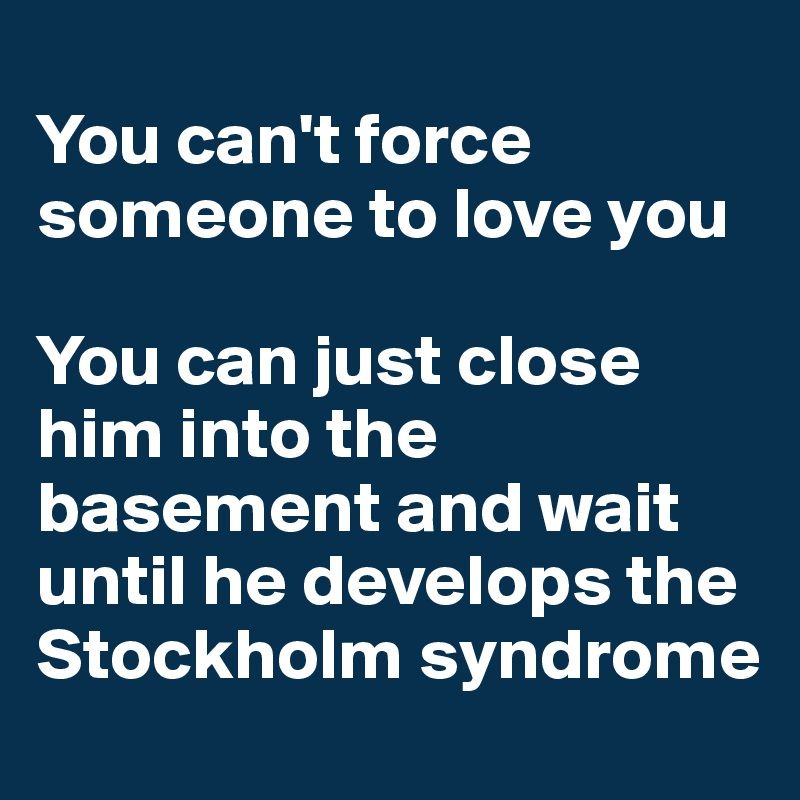 When the rewards stopped, they might press one or two more times just to see whether any new food appeared. But...even the dumbest rats quickly wandered away and stopped paying attention to the bar.
When the rewards stopped, they might press one or two more times just to see whether any new food appeared. But...even the dumbest rats quickly wandered away and stopped paying attention to the bar.
Pattern 2—Reward for every 10th press
Here the researchers got the rats used to pressing the food bar 10 times before the food came out. This means that the rats could not learn that no more food would come until after they had already done the work of pressing at least 10 times. Most tried at least one more time and did another set of 10. Eventually, all the rats realized there were no more food rewards for bar pressing and they stopped working and wandered off to look elsewhere for food.
Pattern 3—Reward every 10 minutes
Here the rats learned that they would only get food on a set time schedule. Once they figured out that they would get rewarded 10 minutes after a press, they would eventually get very economical with their presses. They would press once or twice towards the end of the 10-minute period, then stop and wait for their reward. After the rewards stopped, it only took a few non-rewarded 10-minute periods for the rats to stop pressing the bar.
They would press once or twice towards the end of the 10-minute period, then stop and wait for their reward. After the rewards stopped, it only took a few non-rewarded 10-minute periods for the rats to stop pressing the bar.
Result: The researchers learned that having any predictable pattern of rewards for pressing the bar resulted in fewer bar presses after the rewards stopped for good.
Pattern 4—Intermittent Reinforcement
The researchers finally outwitted the rats by doing away with any predictable pattern of reward. They varied the times between rewards and how many bar presses would be required to get food in exchange for work.
Result: The rats kept pressing the bar, even though they were never rewarded again.
In the terminology of “Learning Psychology,” the response of bar pressing was never extinguished on a schedule of “intermittent reinforcement.” In human language, the rats continued to work in the hope that someday they would once again be rewarded.
Stockholm Syndrome
Stockholm Syndrome is the term for a situation in which adults who are mistreated by their captors develop positive feelings towards the people who are mistreating them. As the situation progresses, the captives start to become more childlike and dependent. They become grateful for any small signs of approval and affection. Eventually, they may bond with their captors and even come to love them.
The name comes from a 1973 bank robbery in Stockholm, Sweden in which the robbers took hostages. Much to the world’s surprise, by the time the captives were freed, they had developed positive feelings towards their captors, instead of hating them.
How does all of this apply to being in a relationship with an abusive narcissist?
Stage 1—Continuous Reward with Nothing Required in Return
In the beginning, when the narcissistic individual is focused on “getting” you, they give you lots of emotional food pellets in the form of attention, praise, and sweet gestures. They tell you how wonderful you are, bring you thoughtful gifts, and focus on making you feel good.
They tell you how wonderful you are, bring you thoughtful gifts, and focus on making you feel good.
Almost everyone responds well to getting continuously stroked and praised by someone that they find attractive. This is the narcissistic courtship pattern that has come to be known as “Love Bombing.”
All that they ask for in return is that you continue to give them a chance to prove their love to you. This is the human equivalent of teaching the lab rat where to look for food pellets.
Stage 2—Performance Rewards
Once narcissistic individuals feel more secure with you, they stop continuously rewarding you. Now you only get positive attention when you do things that make the narcissist feel good. Enough positive attention is still flowing your way that you do not really notice that now you only get rewarded when you “press the bar.” In human terms, you are being groomed to want to please the narcissist in your life.
Stage 3—Devaluation Starts, Rewards Decrease
In this stage, your narcissistic mate starts to occasionally mistreat you. They may become critical of you, become controlling, or publicly put you down. You still get occasional emotional “treats,” but now they are unpredictable. The bad moments start to outweigh the good. You are now on the equivalent of an “intermittent reinforcement schedule.”
They may become critical of you, become controlling, or publicly put you down. You still get occasional emotional “treats,” but now they are unpredictable. The bad moments start to outweigh the good. You are now on the equivalent of an “intermittent reinforcement schedule.”
Stage 4—“Gaslighting”
If this is your first experience with an abusive narcissist, you are likely to be extremely puzzled as to why this is happening. Your narcissistic mate supplies the answer. They insist that you are the problem. If only you would do more of a, b, or c, and stop doing x, y, and z, everything would go back to being perfect. The term “Gaslighting” comes from a movie in which a man deliberately tries to drive his wife crazy by making her doubt her own perceptions of reality.
Stage 5: Control Is Established
If you give in and start to believe what your narcissistic mate says and give them even more control over you, BINGO! You are now in a mini Stockholm Syndrome situation.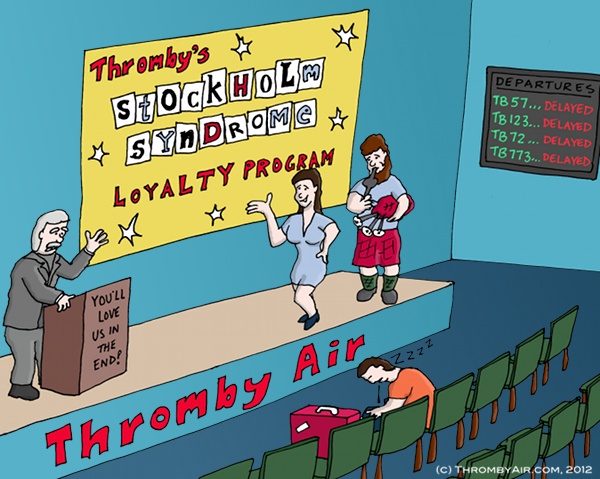 The person who is mistreating you is now in charge of doling out everything. You have allowed yourself to become dependent and infantilized.
The person who is mistreating you is now in charge of doling out everything. You have allowed yourself to become dependent and infantilized.
Stage 6: Resignation and Loss of Self
You are now their helpless prisoner hoping that if you do exactly what they say and show them enough love, they will love you back and be kind to you again.
Stage 7—Addiction, Leaving, and “Hoovering”
Addiction: At this point, you are addicted to their approval. You are no longer thinking rationally. Instead of hating them for abusing you and wanting to be rid of them, you are afraid of losing them to someone else. You are totally trauma bonded to them. This means that you refuse to see the obvious: This person never loved you, cannot love anyone, and they are too narcissistic to care how you feel or how much damage they do to your life.
Leaving: If you happen to summon up the inner strength to leave, your narcissistic mate will suddenly change their tactics. They now start trying to suck you back into the relationship. This is informally called “Hoovering,” after the vacuum cleaner by that name.
They now start trying to suck you back into the relationship. This is informally called “Hoovering,” after the vacuum cleaner by that name.
Hoovering: They may start by doing something minor, like suddenly starting to “like” your social media posts. Then they may send you a casual text asking how work is going. If that does not get you to respond, they up the ante. They go back to the “Love Bombing” tactics that got you interested in them in the first place. If you continue to resist, they try even harder.
They make promises that they have no intention of keeping. They say anything that they think you want to hear.
- I love you so much.
- Life is not worth living without you.
- I made the biggest mistake of my life when I treated you that way.
- I see now that it was all my fault.
- I learned my lesson. From now on I will treat you like the Queen/King that you are.

- I will prove my love for you every day.
- Everything will be different this time.
- I have changed.
Wishful Thinking: Many people get sucked back into the relationship again at this point. After all, you reason, what if they really have changed? Won't I regret it forever if I do not give them a chance now? At this point, you are choosing to ignore everything that you know about this person on the slim chance that they have somehow magically transformed themselves into a decent and reliable human being who actually cares about you.
What is really going on is that it feels really good to be wanted again. Everything that they are telling you, no matter how unlikely, is like a soothing salve for your wounds. You were so so humiliated and hurt by the careless way that they discarded you, and you have already invested so much in the relationship, that you hate to believe that all of this has been a total waste. In addition, it feels so good to be courted again that you simply do not want to walk away while you are getting more of what you have always wanted from them.
The Cycle of Abuse Begins Again
Unfortunately, the moment that your narcissistic loved one realizes that you are now "caught," the rewards diminish, and the cycle of abuse begins again and continues until you walk away or get discarded.
Punchline: Even strong people can be trained to submit by the right combination of praise and punishment.
I once had a German Shepherd dog that would not stop biting people. I tried everything that the books recommended. to break her of the habit. Nothing worked. She was a really big, strong dog and I was afraid that she would hurt somebody seriously and would have to be put down. In desperation, I hired an animal psychologist. He said: “Don’t worry! I can cure her in less than ten minutes.”
I brought her over to him. He bent down and put his face near hers while I held her leash. She lunged to bite him. Before she could get her teeth into him, he punched her in the side of her head. Then he quickly petted her and said, “Good doggy, good doggy!”
She gave him an evil look and went for him. He punched her again, petted her, and said “Good doggy, good doggy!” She paused and looked at him and I could see the wheels turning in her head. She sat down in front of him and never bit anyone again.
He punched her again, petted her, and said “Good doggy, good doggy!” She paused and looked at him and I could see the wheels turning in her head. She sat down in front of him and never bit anyone again.
I said: “I hate that you had to hit her, but that I at least understand. What I don’t understand is the “Good doggy, good doggy!”
He said: “The punch was to stop her from biting me and to make her think. The “Good doggy, good doggy” was to reward her for not biting me.”
Adapted from a Quora.com post: "How could I, at age 62 without history of co-dependency, or abusive relationships, become trauma bonded to my partner with NPD?
Stockholm Syndrome and Trauma Bonding in Narcissistic Relationships | by narsistsiz | Psychology & Self healing
Photo by pixabay.com from PexelsIn 1973, there was a huge bank robbery attempt in Stockholm, Sweden. The robbers held four bank workers hostage for six days. On the sixth days, the police broke inside, trying to arrest the robbers and save the hostages but the said hostages tried to protect the robbers from the police. Later on, the hostages refused giving testimony against the robbers and they even started collecting money to defend them. Within six days of captivity, the hostages had started developing a deep sympathy for the robbers.
Later on, the hostages refused giving testimony against the robbers and they even started collecting money to defend them. Within six days of captivity, the hostages had started developing a deep sympathy for the robbers.
As a result, the incident in which captives start developing positive feelings for their captors was named Stockholm Syndrome. This intriguing and paradoxical bond between captors and captives was also found amongst prisoners of war and those being kept in concentration camps as well. But in time, it’s seen that Stockholm Syndrome is not all about literal captors and captives. For example; Stockholm Syndrome can be found between parents and children or spouses as well as in narcissistic relationships, which is the main topic of our article.
In what conditions do we see Stockholm Syndrome?
Stockholm Syndrome requires four important elements:
- The victim should be in a life threatening situation.

- The victim should be isolated.
- The victim should be unable to perform survival strategies such as “fight or flight”. (Or at least feel like they’re unable to.)
- The abuser should show some “kindness” every once in a while.
Judging by the first one, you might think that Stockholm Syndrome happening in a narcissistic relationship is very unlikely. You might feel like a narcissistic relationship cannot exactly be life threatening. After all, not all narcissists resort to physical violence. On the other hand, living with a narcissist can mean that your life is indeed in danger. This danger can be physical, emotional, psychological or spiritual. Besides, narcissists can throw violent temper tantrums when they can’t get something they want or when they’re losing control over someone (narcissistic rage). People on the receiving end of this rage (even if their partners have never abused them physical in the past) may find themselves fearing for their lives or well-being in general.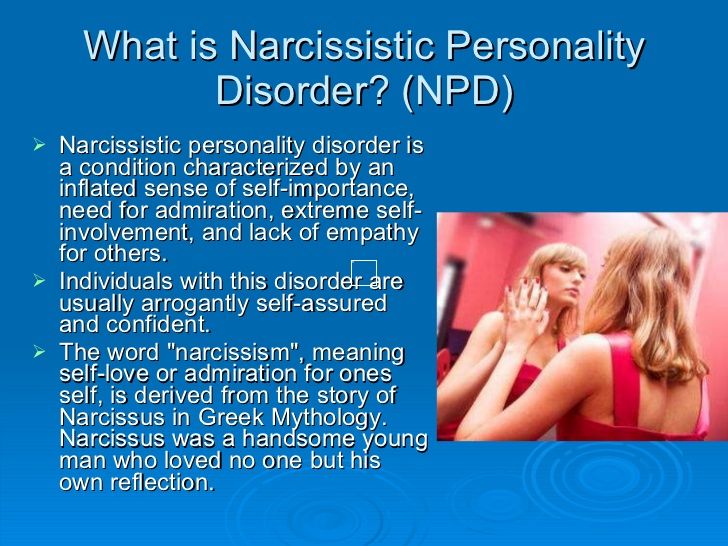
And the second case is about isolating the victim. Isolating the victim is a typical abusive behavior. In some cases, the victim can practically turn into a hostage due to being completely alienated from the outside world. And in some others, the victim avoids the point of views of other people when under the influence of feelings such as jealousy, paranoia and fear fueled by the narcissist. The isolated person fails to notice the abuse they’re being put through due to not being able to consult to other people, and they also feel like this small, artificial kindness shown by the abuser is all they have now so they cling to it.
Another reason is that the victim is unable to escape, or so they believe because they were convinced by the abuser. In the Stockholm robbery, it was found out that one of the hostages got a chance to escape and yet she did not. The reason to that may be the fact she believed she could not succeed, perhaps she was simply afraid of the danger this attempt might bring. In this situation called “behavioral despair”, the victim feels so hopeless that they resign to their fate. In narcissistic relationships, if the victim is financially abused as well, or if they’re in a relationship where there are children involved, they can be convinced that there’s no way out for them. And if the abused person also has a narcissistic parent, it’s quite likely for them to show signs of behavioral despair. Babies are dependent on their parents in order to survive. But when it comes to children who grow up in problematic environments where their needs are not met; the fact they feel dependent and not strong enough as well as the “small favors” granted by their abusive parents every once in a while may cause them to develop a sympathy for them.
In this situation called “behavioral despair”, the victim feels so hopeless that they resign to their fate. In narcissistic relationships, if the victim is financially abused as well, or if they’re in a relationship where there are children involved, they can be convinced that there’s no way out for them. And if the abused person also has a narcissistic parent, it’s quite likely for them to show signs of behavioral despair. Babies are dependent on their parents in order to survive. But when it comes to children who grow up in problematic environments where their needs are not met; the fact they feel dependent and not strong enough as well as the “small favors” granted by their abusive parents every once in a while may cause them to develop a sympathy for them.
In our last condition, in order for the Stockholm Syndrome to emerge the abuser should display a certain amount of kindness. A desperate and hopeless person who’s already in a life threatening situation and utterly at the mercy of the abuser can start trying to rationalize the situation when they’re shown some kindness by the abuser. These attempts at rationalizing the situation may start with “it’s not that bad!” and end in deeply positive feelings for the abuser in time. After a while, the abuser stops being a bad person in the eyes of the victim, they’re simply misunderstood and turned into what they are today due to certain circumstances.
These attempts at rationalizing the situation may start with “it’s not that bad!” and end in deeply positive feelings for the abuser in time. After a while, the abuser stops being a bad person in the eyes of the victim, they’re simply misunderstood and turned into what they are today due to certain circumstances.
At this point, the abuser clings to the exaggerated versions of the few good memories they had with the abuser and starts seeing them the way they want them to be, not the way they actually are today.
Reasons of Stockholm Syndrome
Stockholm Syndrome is a product and natural result of systematic abuse, and it’s practically a survival mechanism. People try to save themselves from dangerous situations with “fight or flight” instincts. But running away or fighting it may not always be possible. If we consider the Stockholm robbery, the hostages cannot really overpower armed robbers, and their chances of getting shot are pretty high if they try to run away.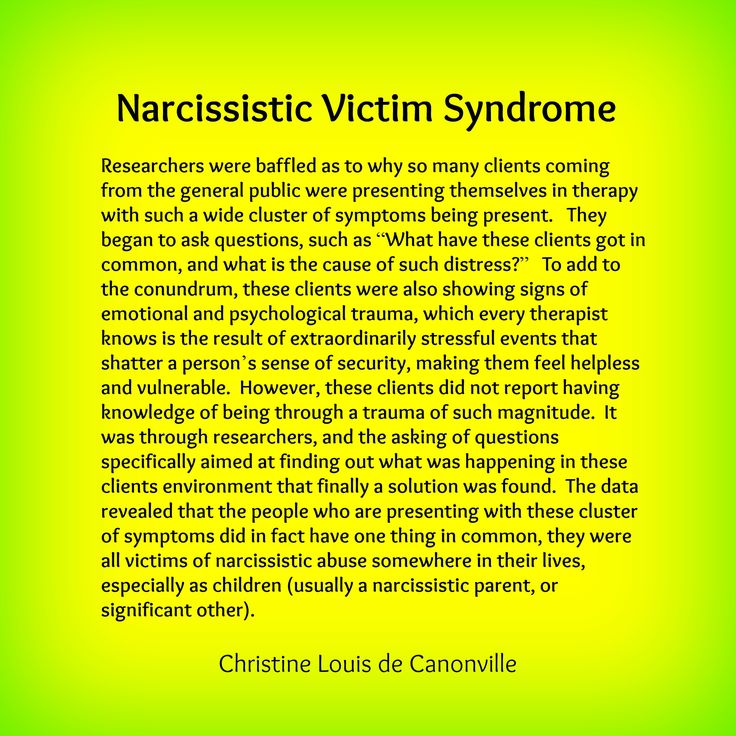 As a result, the victim experiences stress and wants to protect themselves, but that doesn’t seem possible. Also, our brains and bodies are not fit for long-term and continuous stress. Therefore, eventually people tend to focus on the “positive aspects” instinctively in an attempt to reduce the stress they’re experiencing. This is practically something that protects them from going utterly insane and it helps them cope with the trauma. People suffering from Stockholm Syndrome have faced something so traumatic that the only way to reduce it was to do this.
As a result, the victim experiences stress and wants to protect themselves, but that doesn’t seem possible. Also, our brains and bodies are not fit for long-term and continuous stress. Therefore, eventually people tend to focus on the “positive aspects” instinctively in an attempt to reduce the stress they’re experiencing. This is practically something that protects them from going utterly insane and it helps them cope with the trauma. People suffering from Stockholm Syndrome have faced something so traumatic that the only way to reduce it was to do this.
The first instinct of the hostages might have been to pretend like they’re on the robbers’ side in order to avoid angering them rather than “focusing on the positive”. They can try to please the abuser to avoid violence. In bilateral relationships, if one of the parties is prone to violence and sudden, aggressive outbursts; the other party may instinctively try to keep them satisfied just to avoid their wrath. But after a while, once the hope for escape has completely faded, this situation goes beyond just pretending and the victim can find themselves feeling a genuine sympathy for the abuser.
Long story short, when there’s no hope for escape and that there’s no other options (or so you think), you try to fit in and adapt to the new conditions in order to survive. Besides, once you embrace the abuser’s point of view, you’re no longer a victim. This situation makes one feel less inferior and more in control of things. As long as the danger of maintaining the relationship isn’t much higher than the risk a breakup might bring, it’s quite hard for the victim to acknowledge the situation they’re in.
All these situations serve the abuser well, because then they’ve successfully created a voluntary victim. Especially for the emotional manipulators, keeping the victim completely under their control is not enough; they want the victim to be willing as well.
Despite all this, you might still find Stockholm Syndrome illogical. You might be having trouble understanding a hostage getting attached to their captor, or a child loving their abusive parent, or a person being unable to leave their violent partner.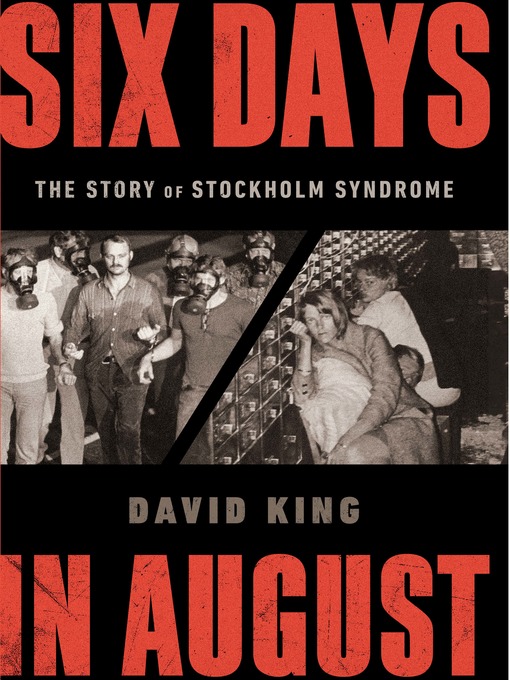 But do not forget that people who have suffered traumatic things cannot always make reasonable choices. Traumatic incidents are exceptional conditions and desperate times call for desperate measures.
But do not forget that people who have suffered traumatic things cannot always make reasonable choices. Traumatic incidents are exceptional conditions and desperate times call for desperate measures.
What to do in order to get rid of Stockholm Syndrome in narcissistic relationships?
Photo by Deleece Cook on UnsplashBreaking the trauma bond on your own might be too difficult, so it would be wiser to get psychological help if possible. You need to make sure the person you’re consulting to has enough knowledge and experience about narcissistic personality disorder, codependency and narcissistic relationship dynamics.
You need to cut all ties with the narcissist for good and follow the “no contact rule”. In this way, you’ll be able to establish yourself a safe zone.
And in relationships, you should always focus on the big picture rather than small details. These “small favors” other people grant you may cost you much bigger things in the long run.
https://narsistsiz.com/stockholm-syndrome-and-trauma-bonding-in-narcissistic-relationships/
References:
Evrim Ağacı. “Stockholm Sendromu: Hayatta Kalmak için Bağlanmak”. Access 17 December, 2018. https://evrimagaci.org/stockholm-sendromu-hayatta-kalmak-icin-baglanmak-7517.
Narcissistic Behavior. “The Place of Stockholm Syndrome in Narcissistic Victim Syndrome”. https://narcissisticbehavior.net/the-place-of-stockholm-syndrome-in-narcissistic-victim-syndrome/.
NARCISSI VICTIMS SYNDROME ?
- Society
- Psychology
- Medicine
- CANCEL
The narcissist uses a particular tactic to make his romantic partner uneasy, destroy his self-confidence and make him doubt everything to the point that he no longer adequately assesses and analyzes the situation and trusts his own memory.
For example, you caught him in a lie, and you call him to account - he will answer that you should not have known about it, so everything is fine. No matter how ridiculous such an excuse sounds, he will prove to you that he is right and continue to insist on his opinion.
Instinctively, the victim feels that what is happening is wrong, but she refuses to believe it herself. Doubts about your rightness arise from the incessant convictions of you that "You take everything too personally", "You are going crazy", "You invent everything", "I did not say anything like that" - gradually the victim ceases to trust his perception In reality, she begins to doubt herself and take all the blame on herself, because the person she loves constantly tells her that the problem is in her.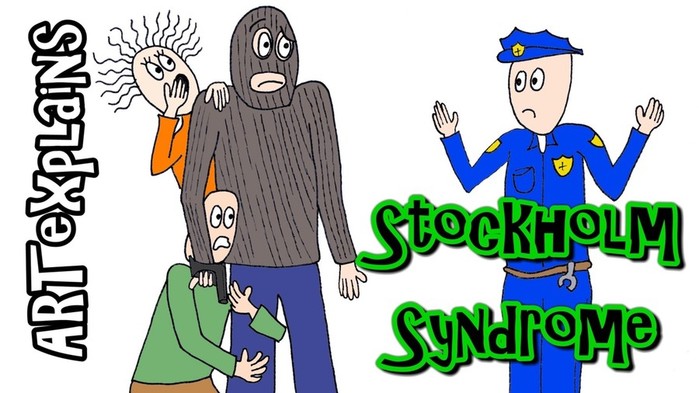
In some cases, the partner behaves identically to the behavior of the STOCKHOLM SYNDROME VICTIMS - she wants to love, support, and protect her abuser, despite the suffering that he makes her go through.
Psychological trauma inflicted by a narcissist - destroyed trust in oneself and in one's feelings further encourages the victim to isolate himself from other people. Symptoms of this trauma are manifested as loss of interest in work, distrust of others, outbursts of irritability, frequent nervous breakdowns, problems with sleep and food, a tendency to self-destruction, thoughts of death. There is an overwhelming fear of a new relationship, the victim avoids showing his emotions, tries to cut off any connection that could lead him to repeat the situation. This is how the subconscious defense mechanism works against the stress caused by the manipulation of the narcissist.
A romantic relationship with a narcissist in any case ends in the destruction of your self-esteem, psyche, deep emotional devastation, and often financial losses. The recovery period in different cases can take a long time
The recovery period in different cases can take a long time
Subscribe
-
(no subject)
No, I'm definitely not ready for a relationship. After yesterday's brainwashing from a person who is nobody to me, on the topic that she misses my calls, ...
-
(no subject)
The narcissist does not know how to create deep connections with other people, he is not interested in this. However, the question of his survival, development, depends on others, he ...
-
Oxytocin and trust, or Why do we believe in psychopaths?
As soon as we realize that we “fell for” a psychopath, and this person deceived us from the very beginning, we invariably ask ourselves the question - Why are we so…
Photo
Hint /igrick/pic/000r1edq
Narcissistic victim syndrome: what is it?
A man or woman suffering from Narcissistic Personality Disorder (NPD) exhibits patterns of abnormal or inappropriate behavior so monstrous that they cause serious injury to people who, in their grief, contact them.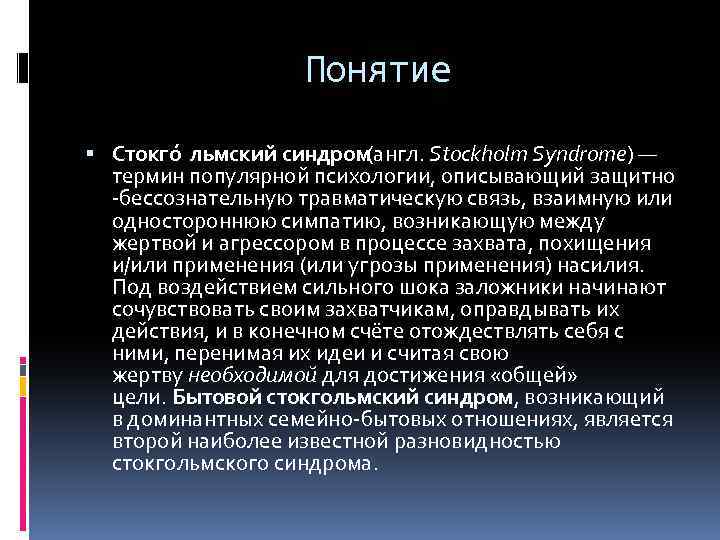
Inappropriate behavior includes extremely insensitive exploitation of victims, the consequences of which have been given the name Narcissistic Abuse Victim Syndrome (or Narcissistic Victim Syndrome (VAS)). While much medical literature has been devoted to narcissistic personality disorder (NPD), little or nothing is known about Narcissistic Victim Syndrome (NPS). The Diagnostic and Statistical Manual of Mental Disorders (DSM-IV), published by the American Psychiatric Association, which is considered the "bible" for professionals, pays much attention to NPD. However, the DSM-IV is silent on how the behavior of narcissists affects those who live or work with them, and how such behavior affects their mental health. As a result of targeted research conducted by many psychotherapists, a number of characteristic features have been identified in victims of narcissistic abuse. The good news is that physicians are pushing for this syndrome to be included in the next version of the Diagnostic and Statistical Manual (in DSM-V, the previous fourth version was published in 2013) with the hope that standard guidelines will be developed for working with such patients.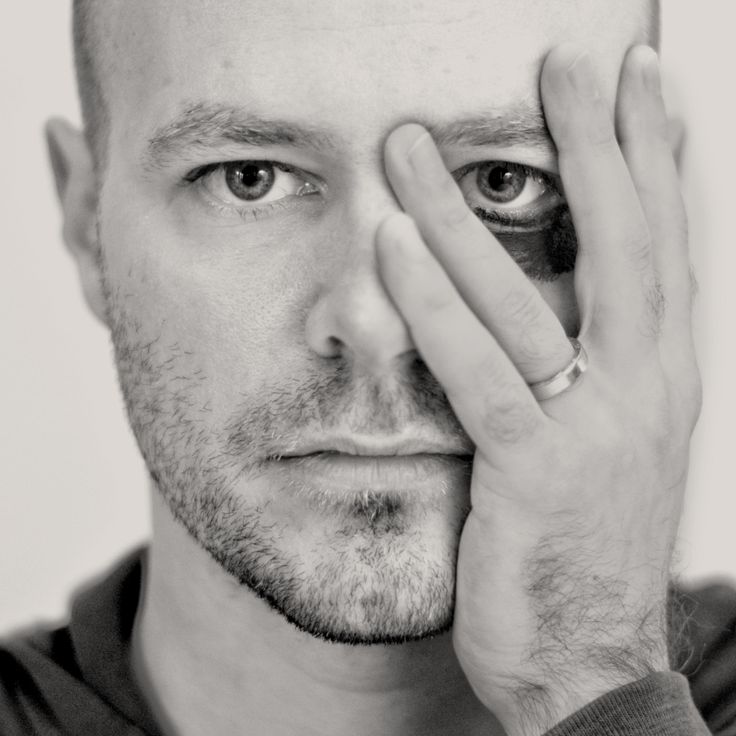 .
.
First, what do we mean by "syndrome"?
The word "syndrome" is of Greek origin: "syn" - together, "dramein" - to flee. Thus, a syndrome is a set of signs and symptoms that tend to "run together", and this combination is the result of physical, mental, emotional and mental abuse. In order to diagnose a patient who has been the victim of narcissistic abuse, the therapist must be able to recognize its signs and symptoms and gain an understanding of what happened in the patient's life as his story unfolded. Then therapists will be able to understand whether the client is a victim of narcissistic abuse or a less severe form of abuse and how this affected his mental well-being.
Do therapists have enough information about the effects of narcissism on victims?
If we talk about Ireland, I can confidently say: “Definitely not!”. Narcissistic personality disorder is predominantly dealt with by psychiatrists and psychologists working in the public psychiatric service; therefore, it is not surprising that a diagnosed narcissist rarely voluntarily appears in the office of a psychotherapist who does not work in the official system. At the same time, mental health workers focus on the vulnerabilities and characteristics of interaction with a narcissistic patient, their priority is to take care of him, and not about his victim, and victims often turn to other specialists.
At the same time, mental health workers focus on the vulnerabilities and characteristics of interaction with a narcissistic patient, their priority is to take care of him, and not about his victim, and victims often turn to other specialists.
More often than not, victims turn to the advice or help of psychotherapists not because they are aware of SJS, but because they cannot manage their own lives. I have spoken to many psychotherapists, and while they have an understanding of narcissism, none admit to being qualified to identify signs of narcissistic behavior and its effect on victims, let alone work with a victim of narcissistic abuse. Since most educational programs in psychotherapy in Ireland include a minimum of information on this topic, and the fact that little, if not nothing, has been written about victims of narcissistic abuse in the medical literature, it has been my observation that most therapists learn from their own experience, mistakes, pain working with clients suffering from this syndrome. If you read any narcissistic abuse survivor support group forum, you will notice that the victims constantly say that the therapists do not understand the depth of their suffering and rarely use the term "narcissistic abuse".
If you read any narcissistic abuse survivor support group forum, you will notice that the victims constantly say that the therapists do not understand the depth of their suffering and rarely use the term "narcissistic abuse".
Understanding Narcissistic Victim Syndrome (NPS) requires first understanding Narcissistic Personality Disorder (NPD). To become a competent therapist working with victims of narcissistic abuse, it is vital to study the full spectrum of narcissistic behavior. The spectrum of narcissism is a continuum with healthy manifestations of narcissism at one extreme and pathological narcissistic personality disorder at the other. Meanwhile, in order to traumatize the victim, the narcissist does not have to demonstrate all the features characteristic of the pronounced pathological stage of narcissism. Therefore, therapists must be aware of the full range of narcissistic manifestations and the dynamics of the relationship between the narcissist and his victim. I am talking about narcissists who develop such traits as a sense of entitlement, a need for control and exercise of power, grandiosity, and how these traits are embodied in behavior whose purpose is to support fantasies of omnipotence and protect a vulnerable ego.
Due to the fact that the narcissist did not receive proper care in childhood (whether it was a lack of care or overprotection), he did not form a true "True Self", which is necessary for a full adult life. Ignoring the basic needs of the child prevented the development of healthy self-esteem and the ability to express themselves directly. Narcissists spend a lot of energy on defense. One of these defenses is to maintain a "False Self" - a behavioral mask that allows you to appear authentic in the eyes of other people. However, this construction forces the narcissist to be constantly on the defensive against being "recognized", making him extremely vulnerable to narcissistic trauma. Anything perceived as a threat (real or imagined) to the narcissist's self-image or self-presentation becomes a source of narcissistic trauma. Thus, in order to maintain their own illusions and protect their false self from any deviation from the Ideal Ego, the narcissist demands from his victims positive mirroring, strokes and positive responses; and the attention shown by the victims is precisely the narcissistic resource.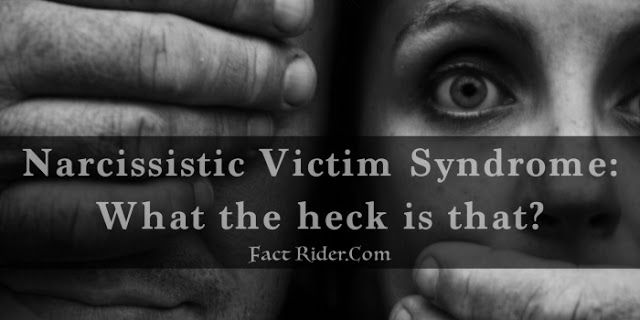
What is a narcissistic resource?
Narcissistic resource is an essential attribute of narcissism, it protects the narcissist from feelings of shame or rejection. The narcissist needs a resource to maintain his fragile ego, and this is provided in two different ways:
Primary Narcissistic Supply is the attention on which the narcissist is dependent. Attention can be social in nature (eg recognition, celebrity, fame or shame, etc.) or personal (eg admiration, flattery, recognition, fear, disgust, etc.).
Secondary Narcissistic Supply is obtained from people or circumstances that provide it on a regular basis (eg spouse, children, friends, colleagues, partners, clients, etc.). This kind of resource allows the narcissist to maintain a normal existence, becomes a source of pride, financial security, social success and the connections he needs.
However, the narcissistic resource is provided not only by people, it can be any inanimate object or circumstances that can attract attention and admiration to the narcissist (for example, an expensive car, real estate, clothes, belonging to a church community, sect, club or business community ).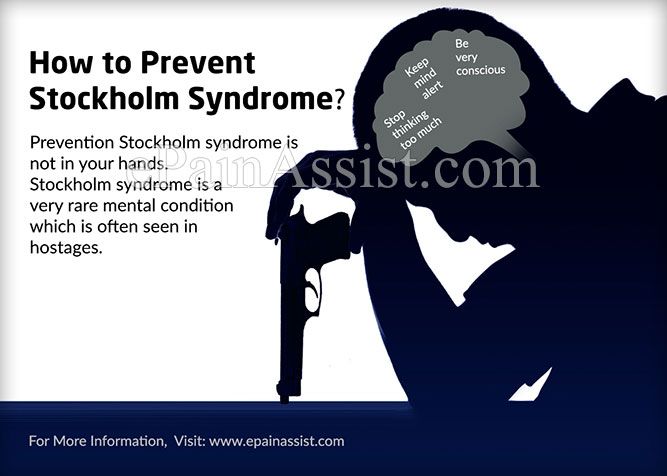 In short, everything that symbolizes position in society is a "narcissistic resource" for the narcissist.
In short, everything that symbolizes position in society is a "narcissistic resource" for the narcissist.
The therapist must understand that this behavior goes hand in hand with a strong narcissistic multi-addiction. Possessed by the illusion of a "False Self" and an inflated opinion of their own superiority, the need to exercise power and control, the narcissist becomes susceptible to all kinds of obsessions, behaviors and phenomena; such as addiction to resource provider, grandiosity, control, risky driving, anger, perfectionism, attention, fame, etc. Without a comprehensive examination of narcissism, there is no way for the therapist to understand the extent of its devastating effects on the victims they work with, these effects can be so strong that they lead to the development of the narcissistic victim syndrome.
I am currently doing extensive work in this area and see it as my mission to pass on what I have learned to other therapists, which will make their work with victims of this type of abuse more effective. I am not trying to "stigmatize" people suffering from narcissistic personality disorder, on the contrary, I suggest that they are also victims of past abuse and they also experience daily torment. I sincerely hope that my research will promote greater compassion for both narcissists and their victims, and I want to help therapists improve their diagnosis and treatment of narcissistic abuse.
I am not trying to "stigmatize" people suffering from narcissistic personality disorder, on the contrary, I suggest that they are also victims of past abuse and they also experience daily torment. I sincerely hope that my research will promote greater compassion for both narcissists and their victims, and I want to help therapists improve their diagnosis and treatment of narcissistic abuse.
What is narcissistic abuse victim syndrome?
First, let's define what a "victim" is? “A victim is a person who has been harmed, injured, or killed as a result of a crime, accident, or other event or act.” Thus (based on this definition), I think it's safe to say that any person who has gone through narcissistic abuse, who has been harmed, traumatized, and in some cases even died by the narcissist's behavior, is indeed a victim.
When I work with people who are victims of narcissistic abuse, one of the most common things I notice about them is that they feel completely overwhelmed because they don't understand what has happened to them.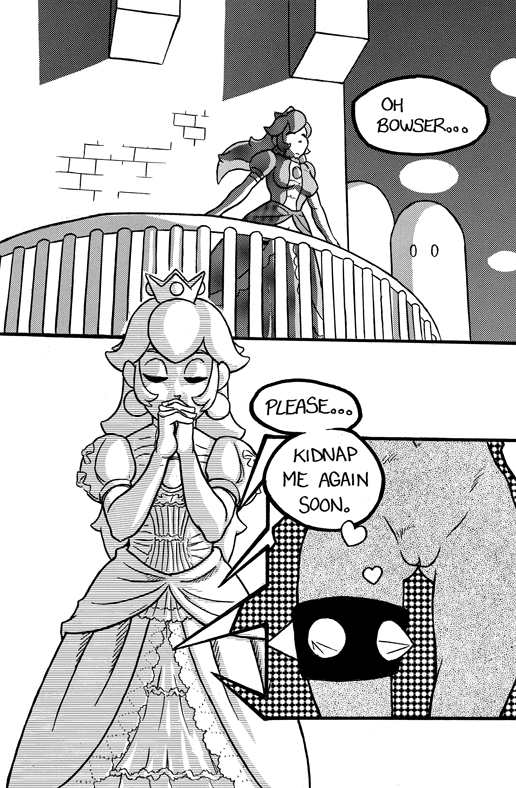 I believe that before they can begin to piece themselves together, it is vital for the therapist to provide the client with information about narcissistic personality disorder (what it is, how it manifests, what causes it, etc.) so that clients can find out what really happened in their personal history. In fact, without such information, it is almost impossible to return self-esteem to a healthy level, and therefore there is a great risk of leaving the victim vulnerable to further retraumatization and possible provocations in relationships with other narcissists.
I believe that before they can begin to piece themselves together, it is vital for the therapist to provide the client with information about narcissistic personality disorder (what it is, how it manifests, what causes it, etc.) so that clients can find out what really happened in their personal history. In fact, without such information, it is almost impossible to return self-esteem to a healthy level, and therefore there is a great risk of leaving the victim vulnerable to further retraumatization and possible provocations in relationships with other narcissists.
If a person has once been the victim of narcissistic abuse (whether in childhood or later in life), the victim syndrome kicks in unconsciously and prompts him to start dancing the "fancy narcissistic dance", leaving him defenseless against possible further abuse. The therapist needs to carefully shed light on how people accept an invitation to a dance that makes them victims. To reiterate, a "narcissistic victim" is any person who has been harmed, traumatized, or died as a result of an interaction with a narcissist (regardless of the severity of the abuser's narcissistic traits).
The victim must understand that the "dance of codependency" involves two people: a rescuer/correct (victim) and a taker/controller (narcissist, addict) who are perfect for each other as dance partners - this is where the madness begins. The consequences for the victim, who does not understand the essence of the intricate dance, lead to the fact that, regardless of the desire to avoid "unhealthy" partners, she will again return to the usual dance floor; the only change may be that she will dance to different tunes, but the personalities of her partners will remain the same.
The therapist must take seriously the fact that narcissism is a very complex disorder that causes great anguish both to the person suffering from it and to those who are forced to deal with narcissistic behavior on a daily basis. When I talk about narcissistic abuse (abuse that can lead to Narcissistic Victim Syndrome), I'm talking about a very insidious form of abuse. By cunning, I mean the implicit, hidden, and often mediated nature of such abuse. This type of abuse is often subtle and subtle because the narcissist will go to great lengths to avoid public exposure. In the person of the narcissist we have Dr. Jekyll and Mr. Hyde (who had just shown love and suddenly flared up with hatred), and this fact causes great harm to the victim. Misunderstanding, fear, stress, frustration, inner turmoil and chaos that the victim experiences force her to “sit on pins and needles” in an attempt to avoid possible conflicts with a narcissistic partner. Long-term relationships are especially damaging to the victim. I compare narcissism to a parasitic worm that penetrates the skin: invisible to the eye, it can freely injure or slowly eat its donor, resulting in injury or illness. By the way, some daffodils continue to live in their victim even after parting, as if the “seeds” sown by them germinate in it.
This type of abuse is often subtle and subtle because the narcissist will go to great lengths to avoid public exposure. In the person of the narcissist we have Dr. Jekyll and Mr. Hyde (who had just shown love and suddenly flared up with hatred), and this fact causes great harm to the victim. Misunderstanding, fear, stress, frustration, inner turmoil and chaos that the victim experiences force her to “sit on pins and needles” in an attempt to avoid possible conflicts with a narcissistic partner. Long-term relationships are especially damaging to the victim. I compare narcissism to a parasitic worm that penetrates the skin: invisible to the eye, it can freely injure or slowly eat its donor, resulting in injury or illness. By the way, some daffodils continue to live in their victim even after parting, as if the “seeds” sown by them germinate in it.
However, when we talk about a victim of narcissistic abuse, we mean an abuse committed by a person with a personality disorder, and, as a rule, this disorder was not diagnosed in him by doctors, therefore, unidentified as a narcissist, this person is present in society ( i. e. at home, at work, in an organization, in a social environment, etc.). It is vital to understand that NPD is a serious mental disorder, with an inflated sense of self-importance and a deep need for attention and admiration. The narcissist considers himself better than other people, whoever they are (i.e. better than spouse, children, parents, siblings, friends, colleagues, bosses, etc.). The people around him are simply objects to satisfy his immediate needs for narcissistic resource, and the narcissist will use any form of abuse to satisfy himself without being burdened with guilt, empathy, or conscience.
e. at home, at work, in an organization, in a social environment, etc.). It is vital to understand that NPD is a serious mental disorder, with an inflated sense of self-importance and a deep need for attention and admiration. The narcissist considers himself better than other people, whoever they are (i.e. better than spouse, children, parents, siblings, friends, colleagues, bosses, etc.). The people around him are simply objects to satisfy his immediate needs for narcissistic resource, and the narcissist will use any form of abuse to satisfy himself without being burdened with guilt, empathy, or conscience.
Do victims of narcissistic abuse have anything in common?
Do you think that such clients come into the office with the words “Hi, I am a victim of narcissistic abuse”? Of course not! They are like any client entering your therapy room for the first time. They will most likely voice a fairly simple and mundane problem, such as feeling overwhelmed, prone to anxiety attacks, or feeling powerless. They have no idea that they ended up in a “war zone” on the same team as a narcissistic saboteur (were before or are now). However, do not be afraid that as a therapist you will not be able to cope with this syndrome. If you have the appropriate completed education, then you should have all the skills necessary to work with this syndrome. Armed with the knowledge of narcissistic abuse and practical trauma skills, you can help any victim of narcissistic abuse.
They have no idea that they ended up in a “war zone” on the same team as a narcissistic saboteur (were before or are now). However, do not be afraid that as a therapist you will not be able to cope with this syndrome. If you have the appropriate completed education, then you should have all the skills necessary to work with this syndrome. Armed with the knowledge of narcissistic abuse and practical trauma skills, you can help any victim of narcissistic abuse.
Like all therapist clients, victims of narcissists have a story to tell; therefore, they need someone who will become an active listener and explain what really happened to them. In my opinion, this is a test of the human experience, which is vitally important to do from the very beginning. These clients are not insane, but they often exhibit nervousness or agitation, increased levels of anxiety, and low self-esteem. Often they demonstrate obsessive-compulsive behaviors, are prone to phobias, panic attacks, so from time to time it may actually seem that they are going crazy. Perhaps they suffer from insomnia and have an eating disorder, so you may notice that some of them are underweight (anorexia as a means of gaining some control), others are overweight (as a result of overeating for self-complacency).
Perhaps they suffer from insomnia and have an eating disorder, so you may notice that some of them are underweight (anorexia as a means of gaining some control), others are overweight (as a result of overeating for self-complacency).
When you work with the NLS, you will encounter emotions such as shock, anger, fear, and guilt. Often, victims show signs of post-traumatic stress disorder (PTSD) or co-dependent post-traumatic stress disorder (Co-PTSD). The symptoms of PTSD are usually grouped into three main categories: over-experiencing (flashbacks, hallucinations, nightmares, etc.), avoidance (people, places, thoughts, loss of interest, etc.), and over-excitation (excessive emotionality, problems with relaxation, difficulty sleeping and concentrating, temper tantrums, anxiety, panic attacks, etc.). You may also notice that your client has a tendency to "dissociate" during a conversation. In this way, the traumatized person tends to "separate himself from the experience": he withdraws from his own emotions, bodily manifestations, or environment.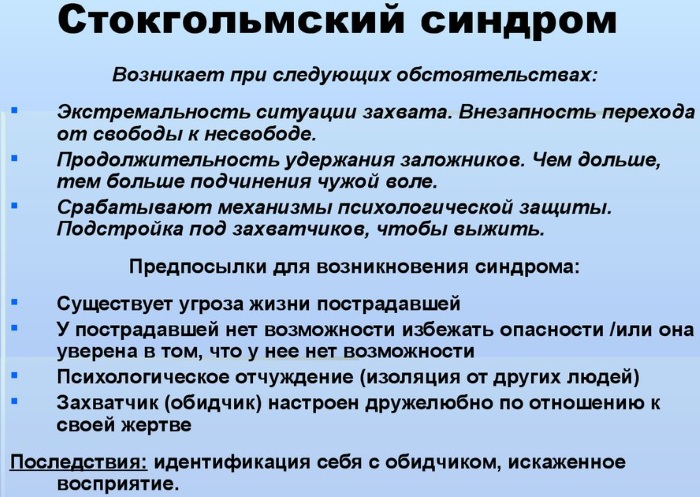 This behavior is called "derealization" (derealization).
This behavior is called "derealization" (derealization).
Dissociation can be a direct result of trauma, often experienced repeatedly in various forms during childhood narcissistic traumas (ie, physical, psychological, and sexual abuse). Dissociation is an automatic and effective defense mechanism against unbearably severe stress to which the child was subjected; the person seems to “jump out” of the body in order to separate from the unbearable reality of the ongoing abuse; dissociating, i.e. partially excluding himself from the situation, the child gets the opportunity to endure severe traumatic experiences.
I once worked with a client who was sexually abused as a child by a narcissistic father. He called her at the moment when she was playing on the street with friends, raped her, and then sent her back to play. She decided that during the sexual abuse, she would jump out of her body, sit on the wardrobe and watch what happened to the child in bed. She called the baby in bed "brave girl" and the baby on the closet "good girl. " The brave girl never left the house, but the good girl went back to playing with her friends.
" The brave girl never left the house, but the good girl went back to playing with her friends.
This protective mechanism protects the child's ego from being completely destroyed at times when its nervous system is strained to the limit. However, long-term dissociation can lead to disruption of the psyche and regulatory mechanisms. Dissociation is an effective strategy to protect a person during times of crisis, but unfortunately, trauma survivors resort to dissociation too often - every time, in every stressful situation, and as a result, dissociation is reinforced as a habitual automatic reaction to stress. The bodily numbness that accompanies dissociation is not the preferred strategy in absolutely all situations, because it affects the ability to physically defend oneself when confronted with a real threat. Of course, the degrees of dissociation are different - from daytime fantasies to out-of-body to derealization in the case of a constantly experienced experience of dissociation. In the therapist's office, dissociation seriously interferes with the client's inclusion in the process, and if this occurs, it can become a hindrance to therapy. First, the therapist must build a trusting relationship with the client, provide him with a sense of security, so as not to shake his nervous system. By explaining what dissociation is, the therapist can gently draw the client's attention to the moments of his "flight". Creating and introducing new skills (through the game) will take a lot of time. The consequences of narcissistic abuse can include any of the following: low self-esteem, self-harm (self-harm), suicidal thoughts, chronic pain, PTSD, depression, and somatization.
In the therapist's office, dissociation seriously interferes with the client's inclusion in the process, and if this occurs, it can become a hindrance to therapy. First, the therapist must build a trusting relationship with the client, provide him with a sense of security, so as not to shake his nervous system. By explaining what dissociation is, the therapist can gently draw the client's attention to the moments of his "flight". Creating and introducing new skills (through the game) will take a lot of time. The consequences of narcissistic abuse can include any of the following: low self-esteem, self-harm (self-harm), suicidal thoughts, chronic pain, PTSD, depression, and somatization.
Somatization has many physical manifestations that the victim may experience, and with them she usually goes to the local therapist. Doctors, for the most part, cannot make a correct diagnosis, because they do not understand the essence of what is happening, they cannot classify symptoms that have a psychological cause.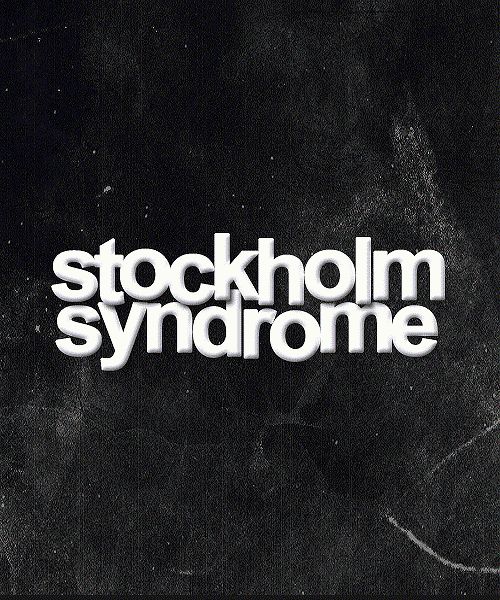 When no obvious organic pathology is found, patients are diagnosed with a psychosomatic illness. Somatic manifestations are the main problem of the general health of the victim of the narcissist. Many manifestations of illness result from repressed memories of narcissistic abuse, usually experienced in childhood. For example, as a response to a fear of narcissistic abuse, a child may develop severe seizures, and then, as an adult, may experience a seizure without obvious causes that the doctor cannot determine. In this case, it is most likely that repressed experiences manifest themselves in this way, which the person himself does not know about, but from which his unconscious is desperately trying to free himself. As a rule, such clients with somatic problems go from doctor to doctor in search of effective treatment. Many knowledgeable doctors recognize that in fact often the root cause lies in the emotional area, and then they refer the patient to a psychotherapist. Very often the symptoms disappear once the emotional cause is revealed, and repressed memories have a chance to surface in the safe space of therapy.
When no obvious organic pathology is found, patients are diagnosed with a psychosomatic illness. Somatic manifestations are the main problem of the general health of the victim of the narcissist. Many manifestations of illness result from repressed memories of narcissistic abuse, usually experienced in childhood. For example, as a response to a fear of narcissistic abuse, a child may develop severe seizures, and then, as an adult, may experience a seizure without obvious causes that the doctor cannot determine. In this case, it is most likely that repressed experiences manifest themselves in this way, which the person himself does not know about, but from which his unconscious is desperately trying to free himself. As a rule, such clients with somatic problems go from doctor to doctor in search of effective treatment. Many knowledgeable doctors recognize that in fact often the root cause lies in the emotional area, and then they refer the patient to a psychotherapist. Very often the symptoms disappear once the emotional cause is revealed, and repressed memories have a chance to surface in the safe space of therapy.
Clients who have suffered narcissistic abuse are likely to experience feelings of shame and resentment, in part because of the abuser's own shame projected onto them. They also tend to take responsibility and are prone to self-blame because they are used to being responsible for the narcissist's behavior. Every time the narcissist gets angry, the victims claim with no hesitation that it is their fault (i.e. the narcissist says, “It’s your fault because you have to admit that you wanted to upset me, now look what you have done.” "). Victims feel humiliated and powerless and experience intense guilt when talking about their abuser, to the point of wanting to defend him. Often they are unhappy with themselves because they think they are not good enough, not smart enough, not pretty enough, and so on.
It is not uncommon for victims to be traumatized by more than one abuser. They can talk about previous and current relationships in which the abuse is present. Quite often, the first injury to the victim was inflicted by the narcissist during childhood. Perhaps one of the parents, grandparents, brother, friend of the victim, etc. After being re-traumatized, victims often internalize the belief that something is wrong with them and that they deserve to be abused, so they resignedly accept their fate. It becomes obvious that they were unable to reveal their personal and professional potential, including because they had to constantly be in the shadow of the aggressor, who relegated them to the background. They are used to living in the shadows without knowing why. These are some of the signs that you can observe. But there are more complex signs that are more difficult to recognize.
Perhaps one of the parents, grandparents, brother, friend of the victim, etc. After being re-traumatized, victims often internalize the belief that something is wrong with them and that they deserve to be abused, so they resignedly accept their fate. It becomes obvious that they were unable to reveal their personal and professional potential, including because they had to constantly be in the shadow of the aggressor, who relegated them to the background. They are used to living in the shadows without knowing why. These are some of the signs that you can observe. But there are more complex signs that are more difficult to recognize.
To diagnose Narcissistic Victim Syndrome, several signs must be identified.
Any of the features mentioned above can be found in almost everyone, but if there is a combination, then FLS can be diagnosed. These signs include many traumatic symptoms (avoidance behavior, loss of interest, feeling disconnected, feeling limited in the future, difficulty sleeping and eating, irritability, hypervigilance, irritability, flashbacks, hopelessness, psychosomatic illness, self-harm, suicidal thoughts, etc.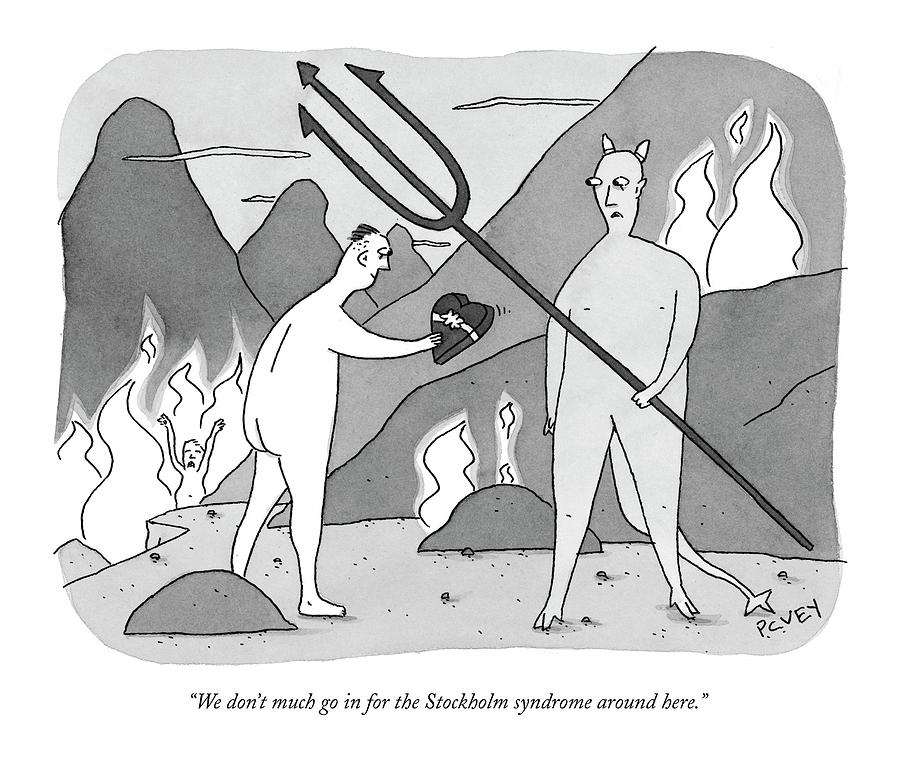 ). d.).
). d.).
As you work together, you may notice that the victim is constantly protective of their abuser. This is meaningless from the point of view of pair interaction, but the meaning of this phenomenon must be sought in the field of the psyche. You have witnessed the manifestation of a psychological mechanism known as "Stockholm Syndrome". Stockholm syndrome involves the victim in an emotional connection with the narcissist; such "traumatic attachment" is known to be a survival strategy for the victim of narcissistic abuse and bullying. Being constantly in close proximity to a hostile person, the victim very soon realizes that her abuser is actually able to carry out his threats, which means that she is actually in danger. Frightened by physical and psychological threats, the victim feels lost and isolated. At the same time, she vaguely feels that she can get some care from the abuser, which both encourages the victim to feel affection for the aggressor and gives her a false sense of security. To understand the reasons why a victim continues to support, protect, and even love an abusive person and to get rid of him, one must understand what, in essence, is Stockholm syndrome. It is important to recognize that it is a very complex unconscious defensive response necessary for survival. Some therapists ask clients why they have stayed in a dysfunctional relationship for so long. Such questions are harmful in themselves, and at the same time they are a sign that the therapist has no idea about the phenomenon, which is called "cognitive dissonance".
To understand the reasons why a victim continues to support, protect, and even love an abusive person and to get rid of him, one must understand what, in essence, is Stockholm syndrome. It is important to recognize that it is a very complex unconscious defensive response necessary for survival. Some therapists ask clients why they have stayed in a dysfunctional relationship for so long. Such questions are harmful in themselves, and at the same time they are a sign that the therapist has no idea about the phenomenon, which is called "cognitive dissonance".
Cognitive dissonance is another unconscious defense mechanism that helps to survive. Imagine what it's like to live in a dangerous war zone where all forms of power and control are used against you (intimidation; emotional, physical and intellectual abuse; isolation, economic abuse, sexual abuse, coercion, control, etc.). The threat of abuse constantly hangs over you. Experiencing this situation creates many internal conflicts in the victim that require protection. For example, a woman living with an abusive narcissist hates this state of affairs. However, in real horror at the aggressive reprisals that a narcissist-abuser can inflict on her if she tries to leave him, she most likely decides to stay with him. Cognitive dissonance manifests itself through rationalization: on the one hand, she hates these painful relationships and everything related to abuse; at the same time, on the other hand, she convinces herself that he is being aggressive because he loves and cares for her. This internal dialogue reduces the victim's anxiety, allowing her to get closer to the abuser to the point where she is ready to protect him from the outside world if people try to save her or support her desire to leave the abuser. As a result, she experiences a serious conflict between her emotional and rational self-perceptions. Her "cognitive dissonance" is a sign of the disharmony that the victim experiences as a result of the incessant struggle of two conflicting ideas; those.
For example, a woman living with an abusive narcissist hates this state of affairs. However, in real horror at the aggressive reprisals that a narcissist-abuser can inflict on her if she tries to leave him, she most likely decides to stay with him. Cognitive dissonance manifests itself through rationalization: on the one hand, she hates these painful relationships and everything related to abuse; at the same time, on the other hand, she convinces herself that he is being aggressive because he loves and cares for her. This internal dialogue reduces the victim's anxiety, allowing her to get closer to the abuser to the point where she is ready to protect him from the outside world if people try to save her or support her desire to leave the abuser. As a result, she experiences a serious conflict between her emotional and rational self-perceptions. Her "cognitive dissonance" is a sign of the disharmony that the victim experiences as a result of the incessant struggle of two conflicting ideas; those. the victim understands that she must get out of the situation of abuse, but also understands that this is fraught with great danger (perhaps also in relation to her children). When two strategies are present at the same time (Stockholm syndrome and cognitive dissonance), the victim firmly believes that such a relationship is not only acceptable, but also vital to her survival. She becomes so entangled in the relationship with the abuser that she feels like her world (intellectual and emotional) will collapse if the relationship ends. This explains the reasons why the victim is afraid of people trying to save her from the abuser, as well as the circumstances of the development of cognitive dissonance and the abuser's defense.
the victim understands that she must get out of the situation of abuse, but also understands that this is fraught with great danger (perhaps also in relation to her children). When two strategies are present at the same time (Stockholm syndrome and cognitive dissonance), the victim firmly believes that such a relationship is not only acceptable, but also vital to her survival. She becomes so entangled in the relationship with the abuser that she feels like her world (intellectual and emotional) will collapse if the relationship ends. This explains the reasons why the victim is afraid of people trying to save her from the abuser, as well as the circumstances of the development of cognitive dissonance and the abuser's defense.
In the process of therapeutic work, you may find another symptom - it may turn out that the client feels insecure, constantly double-checking himself even in the most insignificant situations. For example, when you open the door for a client, he may ask: “Did I come at the appointed time?”. You may also notice that even after a detailed discussion, the client asks for confirmation that he understood you correctly. The client's self-confidence is so low that he has difficulty making simple decisions. You should be aware that if this is happening, there may be another sign of narcissistic abuse called gaslight.
You may also notice that even after a detailed discussion, the client asks for confirmation that he understood you correctly. The client's self-confidence is so low that he has difficulty making simple decisions. You should be aware that if this is happening, there may be another sign of narcissistic abuse called gaslight.
The gaslight method is a form of psychological abuse used by the narcissist to arouse in his victim a feeling of intense anxiety and confusion and lead him to stop trusting his own memory, perception or judgment. Gaslight happens in any relationship between people of any gender. Two people are involved in this: a gas lighter (daffodil) and a gas burner (victim). The lighter is always right, this is how she maintains her power and feels in good shape; at the same time, the burner surrenders itself to the power of the lighter, therefore seeking approval for its own safety. This interaction allows the lighter to create a reality for the burner.
"Gaslight Tango" - one of the narcissistic games that unfolds gradually over a long time, this game (or dance) allows the narcissist to define and shape the reality of his victim, destroying his way of thinking. For the victim, the gaslight begins with a stage of distrust, i.e. something strange happens during the gaslight, but the victim cannot figure out what it is. In the next stage, while the victim still has enough fortitude to resist the narcissist and protect himself from gaslight manipulation, the narcissist gradually begins to deliberately break her defenses and confuse her (i.e. says, for example, "You are too sensitive", " Are you really crazy" or "Did I ever say you're grimacing?"). Or the narcissist may play a trick by moving or hiding things, and when the victim asks if he took them, the narcissist denies, claiming that he has never seen these things. Gradually, the victim, unable to recognize the game, ceases to trust himself. The final stage is depression. By this point, the victims no longer understand who they are and feel broken and isolated. They suspect that they can no longer do anything right, do not trust their own intellect, their perception of reality is distorted.
For the victim, the gaslight begins with a stage of distrust, i.e. something strange happens during the gaslight, but the victim cannot figure out what it is. In the next stage, while the victim still has enough fortitude to resist the narcissist and protect himself from gaslight manipulation, the narcissist gradually begins to deliberately break her defenses and confuse her (i.e. says, for example, "You are too sensitive", " Are you really crazy" or "Did I ever say you're grimacing?"). Or the narcissist may play a trick by moving or hiding things, and when the victim asks if he took them, the narcissist denies, claiming that he has never seen these things. Gradually, the victim, unable to recognize the game, ceases to trust himself. The final stage is depression. By this point, the victims no longer understand who they are and feel broken and isolated. They suspect that they can no longer do anything right, do not trust their own intellect, their perception of reality is distorted.
Gaslight is a serious method of influencing consciousness; it is similar to some of the brainwashing, interrogation and torture practices that have been practiced for decades by the US CIA and religious sects.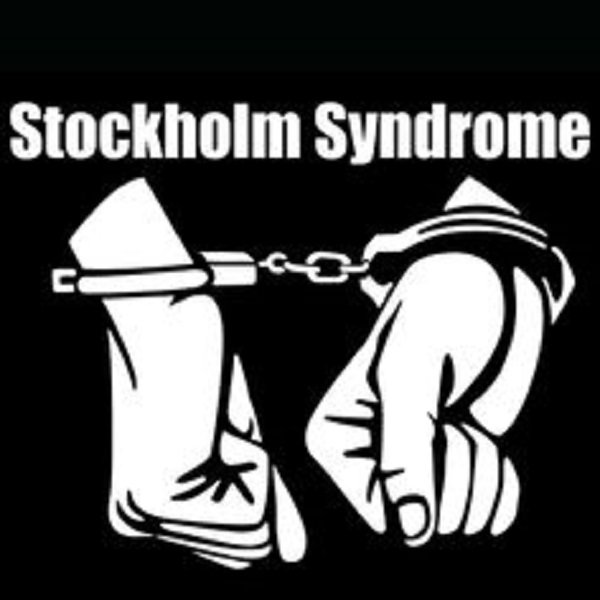 The narcissist resorts to gaslighting as a deliberate and cruel way to manipulate the victim's mind. It instills in the victim such a strong self-doubt that eventually he becomes unable to trust his own perception. At this stage, the victim begins to doubt himself, his thoughts, opinions, ideas, ideals. Often she becomes convinced of her own intellectual weakness and falls into a strong co-dependence on the representation of reality by the abuser.
The narcissist resorts to gaslighting as a deliberate and cruel way to manipulate the victim's mind. It instills in the victim such a strong self-doubt that eventually he becomes unable to trust his own perception. At this stage, the victim begins to doubt himself, his thoughts, opinions, ideas, ideals. Often she becomes convinced of her own intellectual weakness and falls into a strong co-dependence on the representation of reality by the abuser.
Thus, I have presented a summary of the complex issue of Narcissistic Victim Syndrome, and I hope that I have clearly demonstrated the need for the therapist to have a good practical basic knowledge of the consequences that interaction with a person suffering from narcissistic personality disorder can lead to. I think that without this knowledge, the therapist will not be able to penetrate deeply into the essence of the personal history of the victim. He must tell the victim about the characteristics of the behavior of the narcissist, so that she can understand what a long and painful path she went in a pair with her partner in a narcissistic dance (whether he was a parent, brother or sister, friend, colleague, etc.
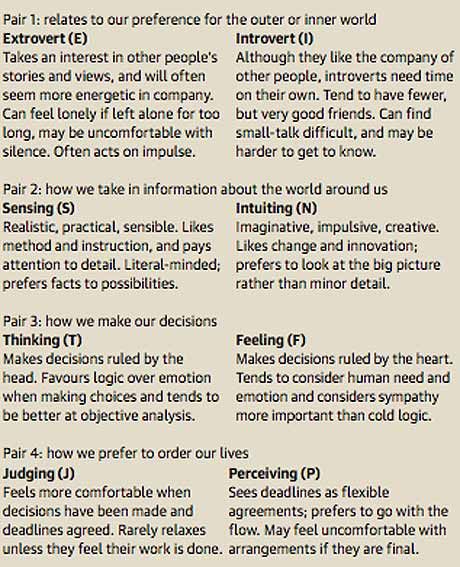




/nginx/o/2019/08/15/12467881t1he799.jpg)








